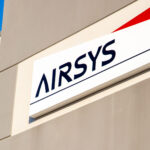
Airsys Unveils PowerOne™ AI-Era Cooling Solutions for Modern Data Centers
November 17, 2025
Revolutionizing Data Center Efficiency: Tony Fischels on Liquid Cooling and Power Compute Effectiveness
November 17, 2025Article by Paul Quigley
The Alphabet Soup of Data Centers
If there’s one thing the data center industry loves, it’s an acronym. We’ve had our PUEs and WUEs, DCIMs, CRACs, CRAHs, CDUs, GPUs, and PUDs. Every conference badge, every PowerPoint, every hallway conversation sounds like alphabet soup with a megawatt budget. It’s now so bad that I sometimes get that Disney song in my head and feel like singing… PUE, WUE… M-O-U-S-E.
And yet, somewhere between all those clever letters, the most important part of the story has been hiding in plain sight. For all the efficiency-related metrics we’ve become obsessed with, very few actually measure effectiveness. And effectiveness is at the core of every conversation about productivity.
Efficiency vs. Effectiveness in AI Data Centers
That’s something I think about every day. I am the president of a global mission-critical air conditioning company. Every day, we look at margins and manufacturing efficiency. We look at how much sellable product we get out of every dollar we spend. If our output drops, we can’t blame the grid, the weather, or the cost of copper. The only thing that matters is how effectively we convert our available resources into a finished product. And my customers compare that effectiveness to my competitors.
If AI data centers truly want to call themselves “AI factories,” then the same logic should apply. Their boards, investors, and regulators will eventually stop asking about simple efficiency metrics and start demanding productivity, or in other words, effectiveness.
AI data centers are not real estate landlords collecting rent from racks. They’re manufacturers of intelligence. And like any factory, they’ll need metrics that show how effectively they’re turning their existing resources into usable product, in this case, compute
That’s where PCE (Power Compute Effectiveness) comes in.
PCE: Turning Watts into Work
Power Compute Effectiveness isn’t here to compete with PUE. It’s here to complete it. To shake hands with it.
PUE tells us how much energy is lost between the wall plug and the processor. PCE tells us what portion of our provisioned power is actually being used for compute.
It’s not just about how efficient your facility is, it’s about how productive your power is. How effectively you’re turning megawatts into meaningful output, aka data. After all, that’s what data centers do. Here’s a simple example:
| Scenario | Provisioned Power | Power Used for Compute | PCE | Outcome |
|---|---|---|---|---|
| Data Center A | 100 MW | 68 MW | 0.68 | Much of the power is tied up in overhead, idle capacity. |
| Data Center B | 100 MW | 85 MW | 0.85 | More of the same power is actually driving actual compute |
In other words:
- PUE reflects how much power makes it to the IT load.
- PCE reflects how much of that IT load is actually doing compute work.
It’s a shift from measuring consumption to measuring creation, a new lens on what productivity really means in the AI era.
PCE As the New Deciding Factor in Data Center Investment
This shift is coming fast, and it’s coming to boardrooms first, because power, quite literally, now determines both where and when new data centers can be built. Energy has become the new permit. Projects are being delayed, canceled, or relocated because power isn’t available soon enough or cheap enough.
In this environment, those who learn to measure and leverage the power they already have may not build faster than others, but they’ll recover faster.
That’s what makes PCE so relevant. It challenges operators to uncover the stranded capacity hiding inside oversizing, redundancy, and margin stacking, and convert allocated power into activated power.
Once you can measure that, you can start assigning real financial value to it. That’s where ROIP (Return on Invested Power) comes in.
From Power to Productivity, to Profitability
If PCE is the operational truth, ROIP is the financial one. Together, they form a new balance sheet for the AI era, one where energy isn’t just a cost, but a performance asset. In this business, one megawatt represents capacity, but also currency.
The numbers tell the story. A facility with a PCE of 0.85 can produce roughly 25% more compute from the same provisioned footprint as one running at 0.68. At scale, that’s the difference between waiting on a substation and launching a new AI cluster. It’s a new definition of agility, one that is measured not in uptime, but in uptake, and that defines a competitive edge.
So yes, maybe the data center industry doesn’t need another acronym. But this one isn’t a vanity tag to print on a booth wall. It’s a wake-up call.
PCE isn’t another metric in the alphabet soup… it’s the spoon.
*****
Paul Quigley
Paul’s career in the HVAC industry has spanned over 36 years, encompassing roles from contracting and distribution to C-Level positions in HVAC manufacturing. A significant aspect of his expertise lies in large-scale, high-demand cooling environments. At the beginning of the millennium, Paul gained international recognition as the co-designer of the largest VRF project in North America, alongside other notable projects across the US.
Paul joined AIRSYS Cooling Technologies, Inc. in 2021 as the company president. He is utilizing his wealth of experience to further broaden the AIRSYS vision of bringing speed to innovative and precise solutions, with a strong future emphasis on advanced cooling technologies for critical data center infrastructure.



